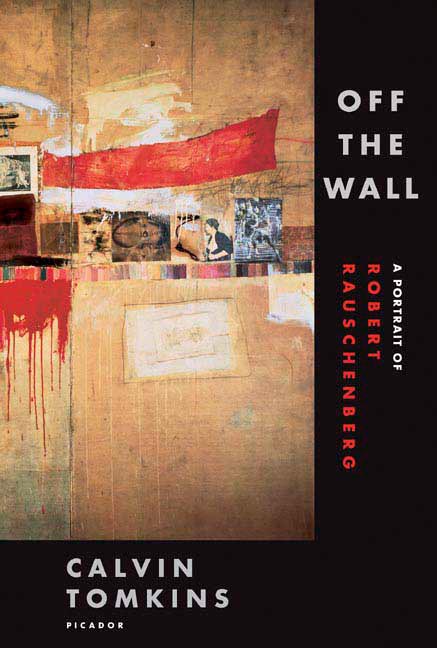
Reviewed in this edition: Off the Wall: A Portrait of Robert Rauschenberg, by Calvin Tomkins; The Man Who Would Stop at Nothing by Melissa Holbrook Pierson; Afterimage by Damon Krukowski.
This week, a look at three books that defy easy categorization. After reading Calvin Tomkins’s excellent Lives of the Artists last year, I wanted to read more of his writing, and ended up opting for his biography of Robert Rauschenberg. Though that might be a touch misleading: while Rauschenberg’s life is the focus of this book, it’s also a way for Tomkins to take in great swaths of post-war American art. He examines movements and scenes through the lens of Rauschenberg’s work. It’s good, and deeply evocative of the work that he produced, some of which couldn’t have been easy to describe. And — not surprisingly — it’s left me eager to read still more from Tomkins. I’m especially curious to read his apparently-out-of-print Living Well is the Best Revenge, as it focuses on the same artistic family that produced one of the subjects of Lisa Cohen’s fantastic All We Know.
If you haven’t read Melissa Holbrook Pierson’s The Place You Love Is Gone, you really should — it’s one of my favorite works of nonfiction in the past decade. Her evocation of 1980s Hoboken is particularly impressive, and her descriptions of vanished towns in upstate New York remain lodged in my brain. The Man Who Would Stop at Nothing is a very different work: it’s a look at long-distance motorcycling, and if its descriptions of travel and the open road don’t make you feel inspired to make some sort of epic jaunt, you’re a stronger reader than me.
I’d already been enjoying Pierson’s book; then, a little over halfway through, she referenced Rebecca Solnit, and I was even more sold. There’s something about it that recalls Christopher McDougall’s Born to Run — there are definitely parallels to be found between his fascination with ultramarathoners and Pierson’s with the Iron Butt Association. But Pierson also weaves in a personal narrative without having it throw the book’s balance out of whack; the book’s opening finds her living after the end of her marriage, revisiting a fondness for motorcycles that hadn’t been an active part of her life in many years.
Damon Krukowski’s Afterimage does nothing to dispel my theory that the three members of Galaxie 500 have maintained a remarkable level of consistently good work over the past few decades. (This isn’t limited to music, either.) Here, his words are paired with photos by Naomi Yang, and the whole thing feels like a series of quiet observations on traveling and touring. There are occasional references to other artists, including Fernando Pessoa, as well as looks at some of Krukowski’s other works (including, I believe, his earlier The Memory Theater Burned as well as Damon & Naomi’s song “Judah and the Maccabees.” It’s a quiet work, but a memorable one.
Follow Vol. 1 Brooklyn on Twitter, Facebook, Google + our Tumblr, and sign up for our mailing list.
